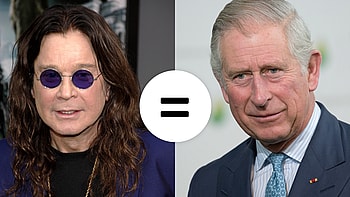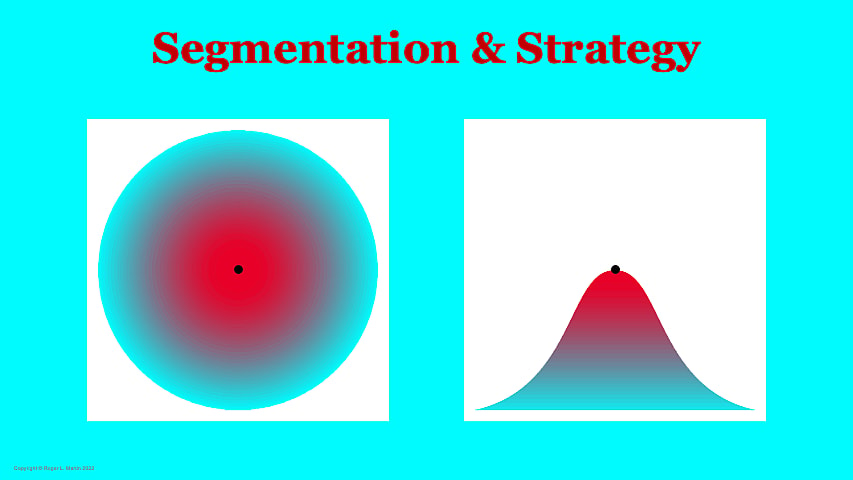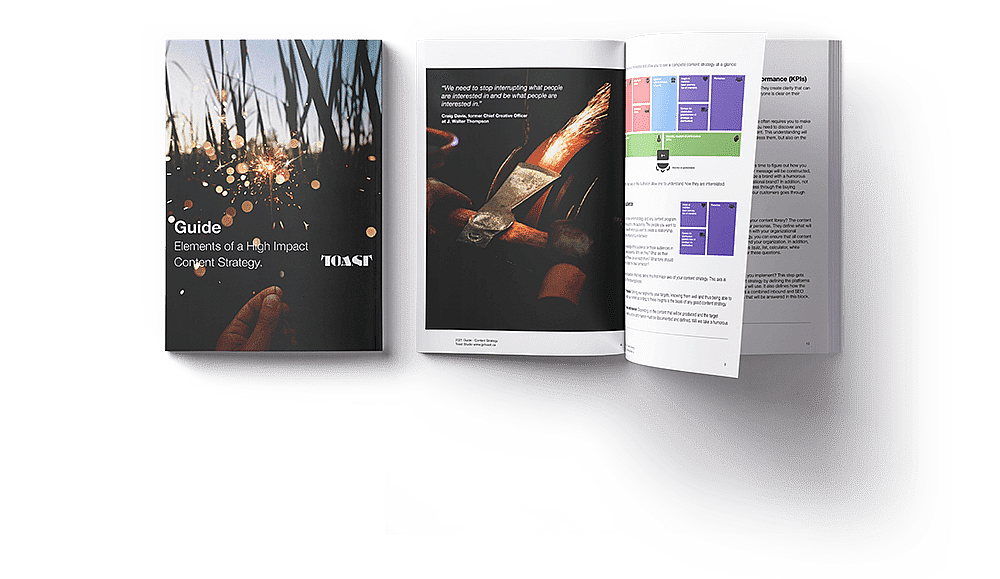Audience segmentation and content strategy

As surprising as it may sound, defining your persona, or your ideal client, might actually slow you in growing your business. One must never forget the fringes and the potential these customers have.
If you have ever read some of Roger Martin’s work, you know how great he is at explaining business strategy and how well he dives into various aspects of a business with great metaphors and examples.
This article dives into how important it is to define our customer, our client, our stakeholder, but how important it also is to consider the individuals that are not so ideal, that are on the fringe of being “our persona” and how they might be the key to growth and success.
Whenever we work on content marketing strategies at Toast, we use our Content Strategy Canvas (you can download your copy here), which allows us to make sure we cover all aspects of the thinking and the operation of a great content program. We cover:
- content audit of existing assets and market
- content goals, performance and objectives based on business goals
- audience segments the brand wants to reach
- content pillars that will be part of the strategy
- the tone and storytelling approaches
- the platforms, types of content and tactics
- ContentOps (content operations) which covers governance, external partners, editorial content calendar, roles and responsibilities of the content team
- and finally budgeting
It is in this process that we document and put our thinking caps on to make sure that all these elements are tied together and are able to function as a whole to build audiences that will trust and know the brand and the organization behind the content strategy.
In this article, we address one aspect of target audience segmentation analysis: defining the ideal client. We do this through the lens of strategist Roger Martin’s three rules of audience segmentation.
Defining your target audience segments
A brand will usually consider between 3 and 7 audience segments in their content marketing strategy.
These segments will be defined through a series of descriptive elements, some of them demographic (sex, age, occupation, level of education, etc.) and others that will be more oriented towards they attitude they have towards your market, or your brand (values about your product’s category, overall attitude towards the economic situation they are in, etc.).
It is important to note that relying solely on demographic elements in your audience definition can be wildly inaccurate, as we showed in a clear example in this article (did you know Ozzy Osbourne and King Charles are actually very similar…?)

This brings us to the first rule Roger Martin mentions in his article: Segmentation is Not Deterministic; It’s Probabilistic.
What does probabilistic mean in the context of your audience definition? When defining your audience segments, you are actually putting on paper “chances” that people will have this or that attribute. It does not mean they will absolutely have all these attributes.
Which brings us to a very interesting analogy that Roger Martin explains: the bowl.
Defining audiences with the “bowl” analogy in mind

In this analogy, Martin demonstrates how audience definition often works at defining a specific type of customer, through demographic and psychometric attributes. This definition gives birth to the definition of a very specific individual that your brands wants to target.
In the bowl of blueberries above, this very specific individual is the blueberry that sits at the bottom of the bowl, in the middle of the bowl, often called a persona. All the other blueberries might also be potential customers of your brand, but they do not fit the exact description you make. They are in your bowl, in your spectrum of potential clients, but they are not exactly what you defined. And beyond that, of course, some blueberries simply do not fit the description and fall outside of the bowl.
In more “business talk”, putting blueberries aside, Roger Martin offers this vizualisation:

This shows the bowl analogy, but through an inverted bowl graphic (on the right).
When defining your persona, you are basically describing the dot in the image above. The exact perfect client your product development team has in mind.
But this individual might not exist in real life. This individual is at the center of a myriad of other people that might be interested in buying your product or service. From the center of the circle (the center of the bowl), there are dozens, hundreds, thousands of people the are more (in red) or less (in bluer tones) interested in what you offer.
In your content strategy, you often think about the warmer audience members you have, the ones that are closer to the middle, but real opportunity might be on the fringes of this bowl. The audiences that fall into the colder parts of the circle might actually be your biggest opportunity. These people have an interest in what you offer, all you have to do is warm them up to your products and services.
A great opportunity for content marketing strategies and content strategists to shine with usable content that will drive these people towards the middle of the diagram.
Which brings us to Roger Martin’s second rule of audience segmentation: You Don’t Determine Customers’ Segment; They Do.
Keeping an open mind with your audience segments
All these content marketing efforts to reach, engage and build trust with a piece of content will fall short if you are not also keeping an eye on who actually buys and wants to hear about your brand.
As much as you want to define the ideal customer of your brand, in the end it is the customers themselves that decide who your segments will be.
You must remain flexible and adjust your audience segments definitions as you deploy your audience segmentation strategies. Audiences change, their behaviours change, and your initial assumptions might have to be thrown out the window once you really start seeing who engages and buys from you. A successful content strategy is always able to adapt as it lives and is deployed.
Which brings us to the third rule: Segments aren’t Homogeneous; They are Heterogeneous.
Your audience is not a “point”, it is a “bowl”
As explained above, a great way to see your audience is through the image of a kitchen bowl sitting on a counter.
Your audience will “fall” into this bowl, but no two individuals will be the same, and not two individuals will likely fall exactly at the bottom-middle of your bowl as the perfect definition of your persona.
This is actually one reason we use the word “persona” less and less, because it actually allows us to too easily forget how heterogeneous our audiences are.
The more you are able to consider a large and deep bowl (see Roger Martin’s article for a great explanation of what the width and depth of the bowl mean), the more you pave the way for opportunities to grow your content marketing audience and grow your brand.
The customer is in charge, not you
In the end, you must remember that no matter how well you plan and work on your audience segmentation, it is your customers that are in charge, not you.
They are the ones using search engines, they are the ones using word of mouth to describe who you are and what you do. No matter what your business goals and your content goals are, what your content plan says and how good your behavioural segmentation is, they’re the ones choosing to buy from you (or not).
You must keep an ear out to detect signals, behavioural changes, attributes that you had not expected. Great content marketing strategies are able to cater for these situations and they will be ever-evolving and adjusting to market conditions. This is actually an important part of the yearly planning of ContentOps in our content marketing programs.
Wrapping up this article, you can keep these three Roger Martin rules in mind… and share them with your content team:
- Segmentation is Not Deterministic; Its Probabilistic
- You Don’t Determine Customers’ Segment; They Do
- Segments aren’t Homogeneous; They are Heterogeneous




